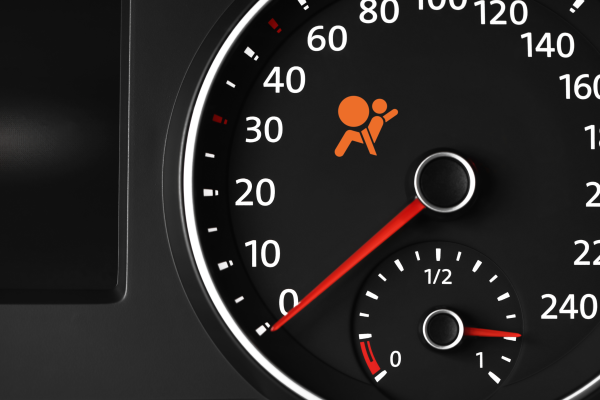Car Maintenance
Decoding the Oil Change Indicator: Keeping Your Car Healthy

Understanding the Oil Change Indicator
The oil change indicator on your dashboard is more than just a simple reminder – it's a crucial component that helps maintain the health and longevity of your vehicle's engine. This indicator has undergone quite an evolution from the traditional stickers on the windshield to sophisticated onboard computer systems that alert drivers with remarkable precision when it's time to change the engine oil.
How Does the Oil Change Indicator Work?
Modern vehicles come equipped with advanced systems that calculate the life of your engine's oil using various factors. Rather than relying on set mileage intervals, these on-board diagnostic systems track the operating conditions of the vehicle such as engine temperature, idle time, and overall driving habits. They use algorithms to determine the degradation of the oil and prompt the driver accordingly. This tailored approach helps ensure that you're changing your oil at the optimum time, providing the best care for your engine.
The Importance of Timely Oil Changes
Maintaining proper engine lubrication is vital for the performance and durability of your car. Over time, oil breaks down and loses its effectiveness due to exposure to high temperatures, which leads to the formation of sludge and buildup that can damage engine components. Regular oil changes based on the indicator's prompt help to prevent this buildup, ensuring that the engine runs smoothly, retains its efficiency, and avoids unnecessary wear and tear.
Deciphering the Warning Signals
Ignoring the oil change indicator can have serious consequences. When the light comes on, it's usually presented as a maintenance-required light or check engine light, and should not be disregarded. Consult your vehicle's owner's manual to understand what specific indicators mean for your car and the actions you should take once they illuminate. Delays in responding to these warnings can compromise engine performance and longevity, possibly leading to expensive repairs or even engine failure.
Choosing the Right Oil for Your Vehicle
When it's time for an oil change, selecting the appropriate oil is critical. You'll have to choose between synthetic, conventional, or a blend of both, taking into account the manufacturer's recommendations, weather conditions, and your driving patterns. High-performance engines typically benefit from synthetic oils due to their superior resistance to thermal breakdown, whereas conventional oils may suffice for less demanding use. Always consult your owner's manual or a professional to make the best choice for your engine's needs.
DIY vs. Professional Oil Changes
Some car owners prefer the DIY route for oil changes to save money and take hands-on care of their vehicles. This can be a rewarding experience if done correctly, but it's essential to follow proper procedures and dispose of used oil responsibly. For those less inclined to get their hands dirty, professional service technicians offer expertise and can spot potential issues that might be overlooked at home.
The oil change indicator is an invaluable tool for monitoring the health of your car's engine. By understanding and responding to this alert, you can ensure your vehicle continues to operate efficiently and avoid costly engine damage. Whether you opt for professional servicing or do it yourself, staying on top of oil changes is one of the simplest and most effective ways to keep your car healthy for years to come. Always keep an eye on that indicator and drive with the peace of mind that comes from knowing your vehicle is well-maintained.
Vehicle Maintenance
Understanding and Fixing Your Car's Service Airbag Light Issue
Vehicle Maintenance
Seat Belt Cleaning Guide: Easy Tips and Tricks for Your Car
Understanding the Oil Change Indicator
The oil change indicator on your dashboard is more than just a simple reminder – it's a crucial component that helps maintain the health and longevity of your vehicle's engine. This indicator has undergone quite an evolution from the traditional stickers on the windshield to sophisticated onboard computer systems that alert drivers with remarkable precision when it's time to change the engine oil.
How Does the Oil Change Indicator Work?
Modern vehicles come equipped with advanced systems that calculate the life of your engine's oil using various factors. Rather than relying on set mileage intervals, these on-board diagnostic systems track the operating conditions of the vehicle such as engine temperature, idle time, and overall driving habits. They use algorithms to determine the degradation of the oil and prompt the driver accordingly. This tailored approach helps ensure that you're changing your oil at the optimum time, providing the best care for your engine.
The Importance of Timely Oil Changes
Maintaining proper engine lubrication is vital for the performance and durability of your car. Over time, oil breaks down and loses its effectiveness due to exposure to high temperatures, which leads to the formation of sludge and buildup that can damage engine components. Regular oil changes based on the indicator's prompt help to prevent this buildup, ensuring that the engine runs smoothly, retains its efficiency, and avoids unnecessary wear and tear.
Deciphering the Warning Signals
Ignoring the oil change indicator can have serious consequences. When the light comes on, it's usually presented as a maintenance-required light or check engine light, and should not be disregarded. Consult your vehicle's owner's manual to understand what specific indicators mean for your car and the actions you should take once they illuminate. Delays in responding to these warnings can compromise engine performance and longevity, possibly leading to expensive repairs or even engine failure.
Choosing the Right Oil for Your Vehicle
When it's time for an oil change, selecting the appropriate oil is critical. You'll have to choose between synthetic, conventional, or a blend of both, taking into account the manufacturer's recommendations, weather conditions, and your driving patterns. High-performance engines typically benefit from synthetic oils due to their superior resistance to thermal breakdown, whereas conventional oils may suffice for less demanding use. Always consult your owner's manual or a professional to make the best choice for your engine's needs.
DIY vs. Professional Oil Changes
Some car owners prefer the DIY route for oil changes to save money and take hands-on care of their vehicles. This can be a rewarding experience if done correctly, but it's essential to follow proper procedures and dispose of used oil responsibly. For those less inclined to get their hands dirty, professional service technicians offer expertise and can spot potential issues that might be overlooked at home.
The oil change indicator is an invaluable tool for monitoring the health of your car's engine. By understanding and responding to this alert, you can ensure your vehicle continues to operate efficiently and avoid costly engine damage. Whether you opt for professional servicing or do it yourself, staying on top of oil changes is one of the simplest and most effective ways to keep your car healthy for years to come. Always keep an eye on that indicator and drive with the peace of mind that comes from knowing your vehicle is well-maintained.
Vehicle Maintenance
Understanding and Fixing Your Car's Service Airbag Light Issue
Vehicle Maintenance
Seat Belt Cleaning Guide: Easy Tips and Tricks for Your Car


